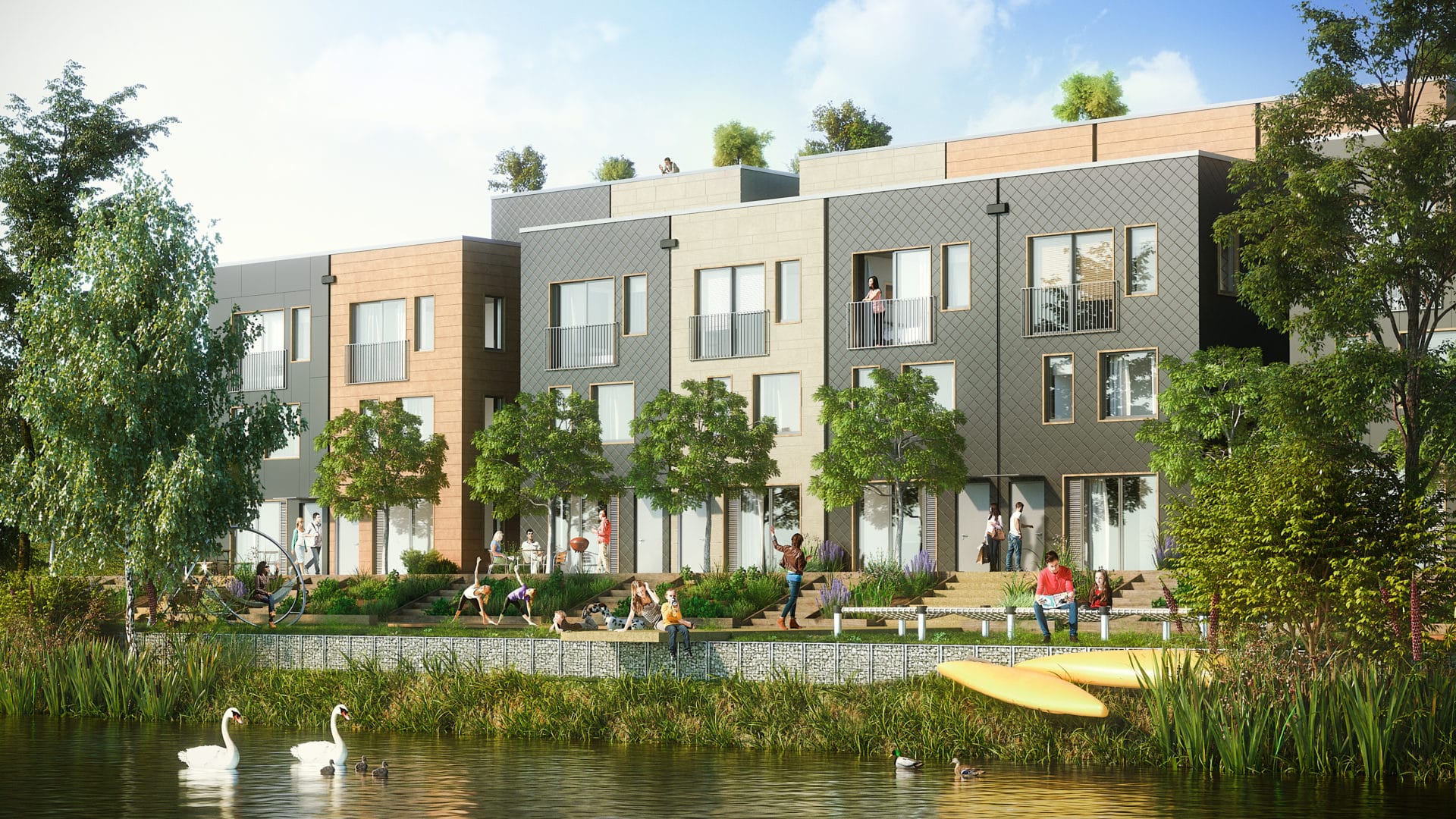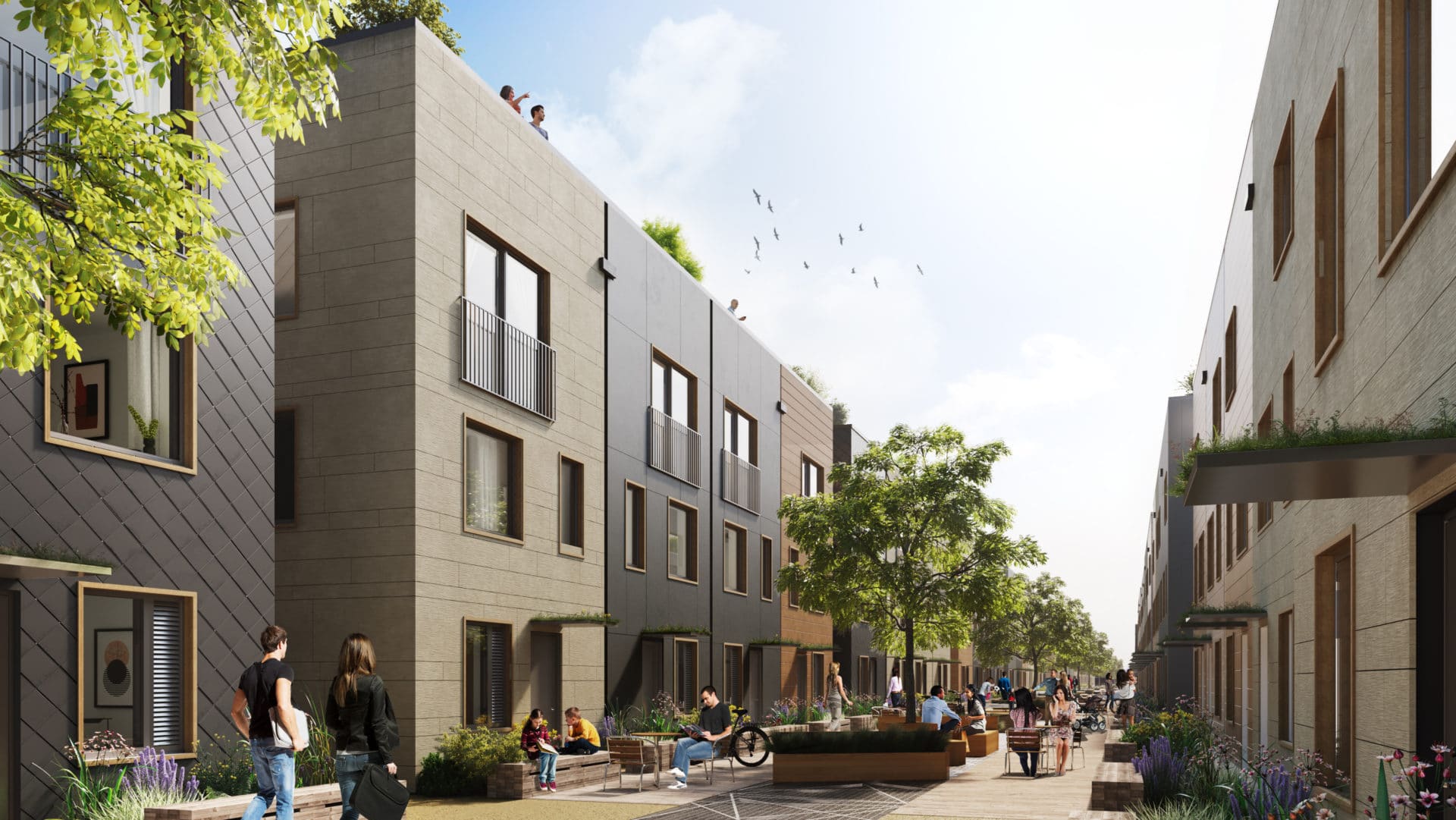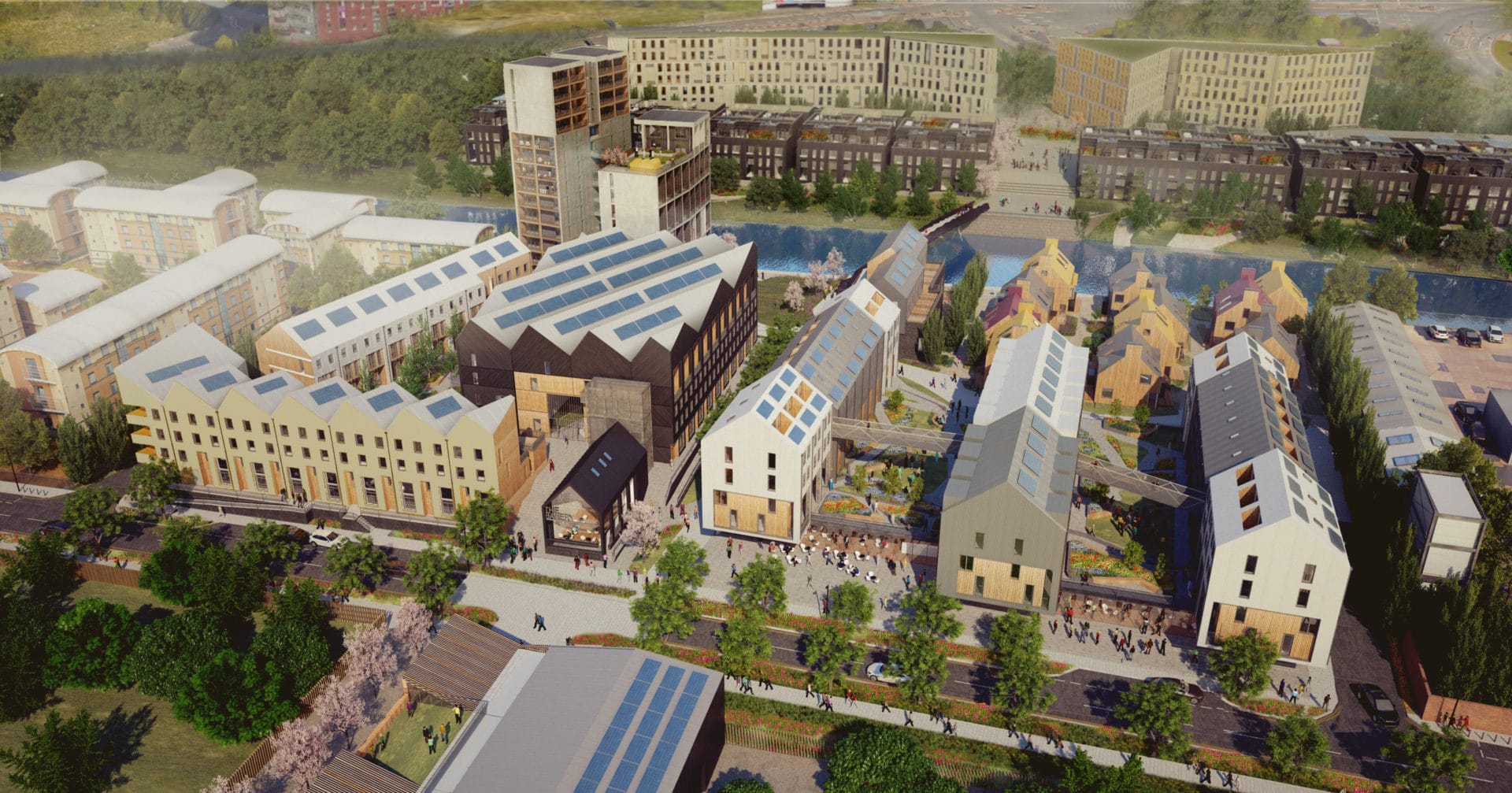United Kingdom (Leeds)
In the UK, buildings, transport and energy account for over two thirds of our carbon dioxide emissions. What if there was a way to tackle all three simultaneously, bringing all down to zero?
Designed in partnership with White Arkitekter, Sweden’s largest architecture firm, Climate Innovation District is a living demonstration of how incredible design can create brilliant places to live that let people radically reduce their carbon footprint. Green from the roof down, it’s the brainchild of Citu Founder Chris Thompson, who wants to show that a better, more sustainable way of living is possible: “Our purpose is to tackle climate change. It’s the biggest challenge of our generation.”
“The Climate Innovation District is setting the pace for creating low carbon cities and with our approach, every new housing development could be designed and manufactured in a way that accelerate the transition to zero carbon living.”

The first of its kind in the UK, the district in Leeds is made up of zero carbon houses in a green, car-free landscape in the city centre. This makes it easy for residents to ditch the car and walk or cycle to work. The goal is for the Climate Innovation District to create a ripple effect of change in the way homes are designed and built in the UK, creating a more sustainable model that becomes the standard for all new homes.
“We only sell to owner-occupiers, and never investors, because we hope to attract people who share our ethos of changing how we live,” Chris explains. “I’ve seen first-hand the benefits of taking a Scandinavian approach to place-making in helping create neighbourhoods that can withstand climate change and outlive our generation, and the next.”
Chris founded Citu with the vision of creating places that would help accelerate the transition to zero carbon cities. The Citu Home is built using a timber-framed design that means it sequesters more carbon in its structure than is emitted from building it. Research conducted by the University of Leeds using the RICS Whole life carbon assessment for the built environment framework confirmed that the Citu Home sequesters 23 tonnes more CO2 in its timber elements than is emitted from its construction. This means each home takes 23 tonnes of CO2 out of the atmosphere and stores it safely in its frame, which will stand for hundreds of years. This is compared to the 65 tonnes of CO2 that is emitted from building a typical new build home in the UK.
Eliminating emissions in the home’s construction is a big step forward, but it’s just the start. Over a building’s lifetime, most come from during its use. The Citu Home uses the latest in sustainable technologies to create a home so efficient that a traditional central heating system is no longer required. An ultra-insulated airtight thermal envelope locks in heat, whilst a low-energy and highly efficient ventilation method called MVHR heat recovery system brings in a constant flow of fresh air. A Citu Home’s heating needs are up to 10 times lower than an average UK house, making it economical to meet them with 100% renewable energy.
The first residents move into their new Zero Carbon homes in late 2018.
AtlasAction: If you agree that great design should mean building sustainable places that tackle climate change, read more about the innovative Citu Home and the Climate Innovation District. If you live in Yorkshire, you can view one of the homes in virtual reality.
Bio
Rob helps Citu fight Climate change by spreading the world about their zero carbon places. He also manages the research into the Citu Home's sustainability.
Project leader
Chris Thompson, Founder, Citu
Support the Atlas
We want the Atlas of the Future media platform and our event to be available to everybody, everywhere for free – always. Fancy helping us spread stories of hope and optimism to create a better tomorrow? For those able, we'd be grateful for any donation.
- Please support the Atlas here
- Thank you!

Climate Innovation District from the river

Solar Avenue: the main street in the Climate Innovation District

New Primary School in the District lets families in the the city centre, close to work

Houses in the Climate Innovation District have roof terraces to make the best use of space

Phase 2 of the District, starting in 2021

